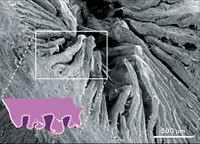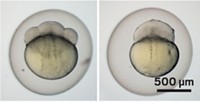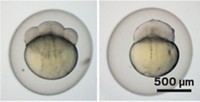Advertisement
Grab your lab coat. Let's get started
Welcome!
Welcome!
Create an account below to get 6 C&EN articles per month, receive newsletters and more - all free.
It seems this is your first time logging in online. Please enter the following information to continue.
As an ACS member you automatically get access to this site. All we need is few more details to create your reading experience.
Not you? Sign in with a different account.
Not you? Sign in with a different account.
ERROR 1
ERROR 1
ERROR 2
ERROR 2
ERROR 2
ERROR 2
ERROR 2
Password and Confirm password must match.
If you have an ACS member number, please enter it here so we can link this account to your membership. (optional)
ERROR 2
ACS values your privacy. By submitting your information, you are gaining access to C&EN and subscribing to our weekly newsletter. We use the information you provide to make your reading experience better, and we will never sell your data to third party members.
Biological Chemistry
Fertilization Formula
Researchers step closer to the molecular mechanism behind the sperm and egg union
by Sarah Everts
October 26, 2010
| A version of this story appeared in
Volume 88, Issue 44

It's pretty much the most important encounter of your life, but scientists still don't know precisely how your father's sperm bound to your mother's egg, injected its genetic package, and then prevented any other aspiring contenders from doing the same.
Even though this year's Nobel Prize in Physiology or Medicine went to Robert Edwards for developing in vitro fertilization—whereby sperm and egg fusion occurs on a lab bench—nature's precise biochemical mechanism for this matchmaking process is a source of thorny debate among developmental scientists. In the past few months, however, two papers have begun to clarify some of the important steps at the foundation of life. One paper reports the crystal structure of an egg protein involved in fertilization, and the second, using animal models and genetics, questions a long-standing theory about sperm-egg fusion.
The lure of finally resolving the molecular mechanisms of fertilization is partly about the prospect of developing cures for infertility or new forms of contraception. "But it's more primal than that," says Luca Jovine, an X-ray crystallographer at the Karolinska Institute in Stockholm. It's about getting insight on the propagation and survival of our species, "something we all relate to," he says.
Although humans still struggle with the technicalities, evolution worked out the kinks of fertilization hundreds of millions of years ago. Since then, animals as diverse as mollusks, reptiles, and humans have multiplied using eggs and sperm. Most animals possess eggs that are dressed in a thick protective coat of proteins and sugars called the zona pellucida (ZP). In mammals, the three proteins that make up the ZP are typically called ZP1, ZP2, and ZP3, and it's these sugar-decorated proteins that a sperm must recognize to successfully fertilize an egg.
If you crack open a developmental biology textbook, you'll likely encounter the fertilization model that was first proposed in the 1980s by Paul M. Wassarman at the Mount Sinai School of Medicine in New York City, which has been tweaked only slightly in the 30 years since. In this model, proteins on the sperm head interact with essential sugars attached to two specific serine residues on ZP3. Although this theory was pervasive, until this past summer, no experiments had conclusively supported or negated the role of ZP3 sugars in sperm-egg recognition, says Pablo E. Visconti, who studies fertilization at the University of Massachusetts, Amherst.
Then this past July, Jurrien Dean, a developmental biologist at the National Institute of Diabetes & Digestive & Kidney Diseases, and his colleagues published a paper in Science that struck a major blow to the textbook ZP3-sugar model (2010, 329, 216).
They engineered mice that are normal except for mutations of the serine residues in ZP3, the ones that supposedly anchored the sugar that sperm recognize. In the engineered mice, one or both of the serines were replaced with alanine residues, which cannot anchor sugars. If the textbook model had been correct, these engineered mice would have been infertile because their ZP3 proteins could not anchor the sugar that sperm use to bind and fertilize an egg. Instead, the mice bred normally. The normal fertility of these mutant mice "is not consistent" with models that require serine-attached sugars to "play an essential role in sperm-egg recognition," the authors note.
Instead, the work of Dean and his colleagues adds weight to a competing fertilization mechanism. This theory proposes that a sperm recognizes the overall macromolecular structure of the egg's protective coating. After this recognition, the egg's ZP2 proteins are chopped up, causing the sugary protein coating to be remodeled such that other enthusiastic sperm cannot weasel their way into the now-fertilized egg.
After Dean's Science paper appeared, Visconti and another cell biologist, Harvey Florman at the University of Massachusetts Medical School in Worcester, wrote a commentary that tried to strike a peaceful middle ground between the two competing theories (Sci. Signaling 2010, 3, pe35). "Dean's paper proved that the two serines on ZP3 aren't involved in fertilization," but it didn't rule out that a sugar attached to a different amino acid could be acting as a binding partner, Visconti says.
Instead, Visconti and Florman suggested a selection of other ZP3 amino acids that might anchor the sperm-recognizing sugars. And with a nod to Dean's results, they suggested that sperm can only access this sugar on ZP3 if ZP2 is not yet chopped up.

Then, at the end of October, Jovine published in Cell an X-ray crystallography structure of ZP3 at 2 Å, the first ever of a complete egg coating protein and the result of five years of effort (DOI: 10.1016/j.cell.2010.09.041). The work revived elements of the initial textbook model, wherein sperm recognize sugars on the egg's ZP3 protein.
Jovine's work "is a major breakthrough in the pursuit of mechanisms involved in mammalian fertilization," Wassarman wrote in an associated commentary (Cell, DOI: 10.1016/j.cell.2010.10.013). "It's been a very exciting time for our field," Visconti says of both papers.
In Jovine's structure, a threonine residue carrying a disaccharide sits in a flexible region of the protein that sperm can easily access. Also near the sugar in the three-dimensional structure is a handful of amino acid residues that three decades of biochemical experiments have suggested may additionally play roles in sperm recognition, Visconti says. "What's really exciting about this structure is that it reconciles a lot of different biochemical data out there," by showing the existence of a binding patch on ZP3, Jovine adds.
Jovine's collaborator, Tsukasa Matsuda at Nagoya University, in Japan, then replaced the sugar-bound threonine with an alanine, which cannot anchor any sugars, and did sperm-binding assays. He found an 80% drop in the ability of sperm to bind. "This suggests that the sugar on the threonine is a sperm-binding site," Jovine says. He is quick to point out that ZP2 is probably also involved in sperm binding. "I wouldn't be surprised if evolution has introduced a bit of redundancy into the fertilization process," he says. "It's very dangerous for a species to rely on a single binding site. If this were the case, then a single mutation could wipe out a species."
As researchers continue to home in on the way—or ways—that sperm and eggs find each other, a few experiments are clearly waiting to be done, Visconti says. For example, to conclusively prove that ZP3 and its threonine-attached sugar is an essential docking site for sperm, mice engineered to lack this amino acid should be infertile, Visconti adds. It's unclear whether Dean, who performed similar experiments in the Science paper, will pursue the question, because Dean refused several requests for interviews. For Jovine, the next step is to try crystallizing ZP3 with a selection of proteins located on the sperm head—of which there are about a dozen candidates. These experiments will certainly shed light on the mechanism of fertilization, but they aren't likely to sate researchers' appetite to learn more about this first milestone of life.





Join the conversation
Contact the reporter
Submit a Letter to the Editor for publication
Engage with us on Twitter